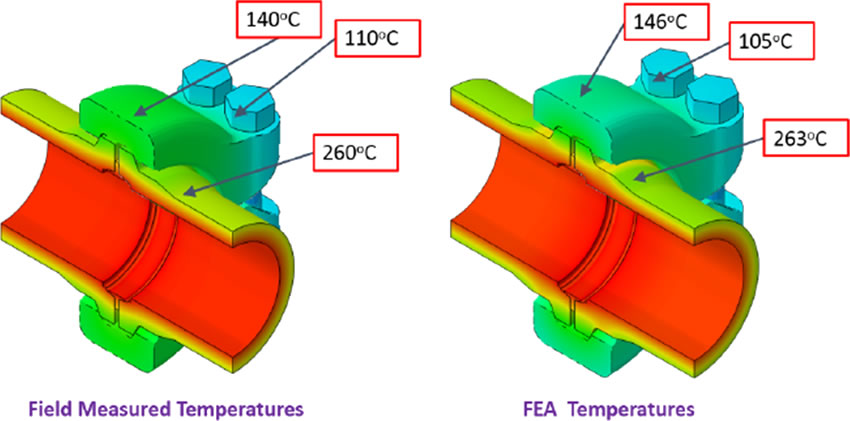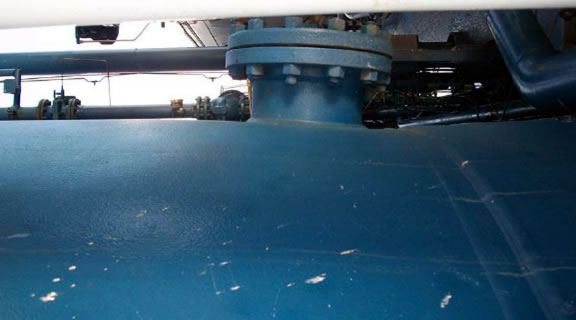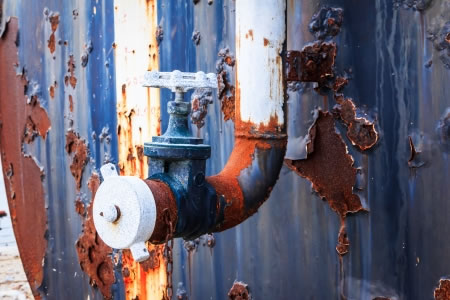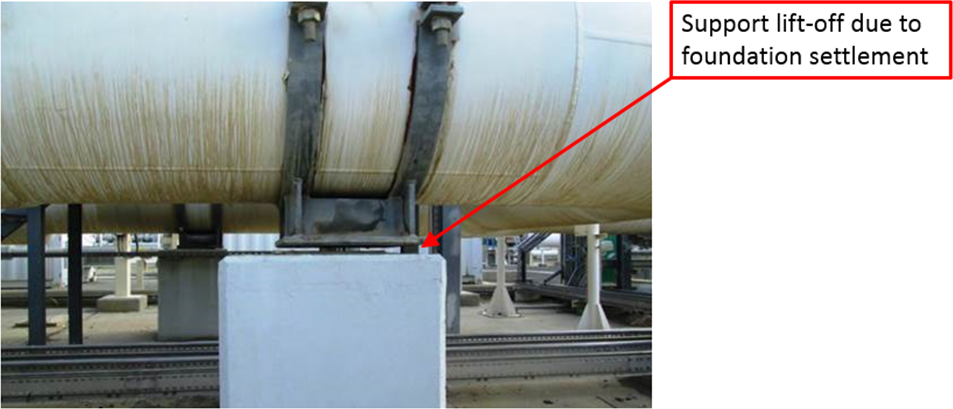API 579/ASME FFS-Based Software Delivers Efficient Evaluation of Brittle Fracture Resistance and Minimum Allowable Temperature
 Process vessels such as towers, drums and heat exchangers may be exposed to low temperatures as a part of normal operation or as the result of an upset condition. Carbon and low alloy steels typically used in process vessels undergo a transition from ductile to brittle behavior as temperature is reduced and are at increased risk of brittle fracture. To reduce this risk, the ASME Boiler & Pressure Vessel Code contains requirements for vessels and vessel components with respect to low temperature operation. While these rules are applicable to new construction, API 579-1/ASME-1 FFS Fitness-For-Service, hereafter referred to as FFS, uses the ASME Code rules as the basis for evaluating the brittle fracture resistance of existing vessels. Becht relies on its proprietary FFS software to provide clients with operating pressure limits as a function of decreasing vessel metal temperature. These limits can be used as part of the client’s process hazard analysis to set operating pressure guidelines for process vessels identified as having the potential for low temperature excursions as a result of the auto-refrigeration of light liquid hydrocarbons or other causes of low temperatures.
Process vessels such as towers, drums and heat exchangers may be exposed to low temperatures as a part of normal operation or as the result of an upset condition. Carbon and low alloy steels typically used in process vessels undergo a transition from ductile to brittle behavior as temperature is reduced and are at increased risk of brittle fracture. To reduce this risk, the ASME Boiler & Pressure Vessel Code contains requirements for vessels and vessel components with respect to low temperature operation. While these rules are applicable to new construction, API 579-1/ASME-1 FFS Fitness-For-Service, hereafter referred to as FFS, uses the ASME Code rules as the basis for evaluating the brittle fracture resistance of existing vessels. Becht relies on its proprietary FFS software to provide clients with operating pressure limits as a function of decreasing vessel metal temperature. These limits can be used as part of the client’s process hazard analysis to set operating pressure guidelines for process vessels identified as having the potential for low temperature excursions as a result of the auto-refrigeration of light liquid hydrocarbons or other causes of low temperatures.
The design temperature of process vessels constructed prior to 1987 typically used the expected operating temperature within some margin as the design temperature. The Code permitted the use of carbon and low alloy steels to –20°F without the need for impact testing which provides a measure of a steel’s resistance to brittle fracture. For operating temperatures below –20°F, there were additional material requirements including impact testing. After 1987, the Code implemented new rules including the elimination of the impact testing exemption to –20F and adding the concept of Minimum Design Metal Temperature (MDMT). In setting the MDMT, the Code requires that “consideration shall include the lowest operating temperature, operational upsets, auto-refrigeration, atmospheric temperature and any other source of cooling.”
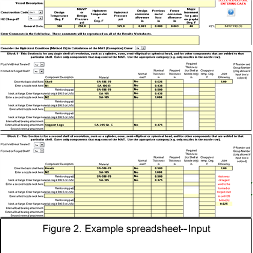 FFS methodology provides for three levels of assessment with each level progressively more in depth and requiring more information. Level 1 is used for evaluating equipment meeting toughness requirements of a recognized code or standard and usually can be accomplished through a review of equipment records. Level 2 is divided into three methods (A, B, and C) that take into account the materials of construction, material heat treatment, design stress, postweld heat treatment, hydrotest pressure and temperature, service environment, and past and future operating conditions. Level 3 is used for equipment not meeting acceptance criteria for Levels 1 and 2 and typically involves in-depth analysis using fracture mechanics.
FFS methodology provides for three levels of assessment with each level progressively more in depth and requiring more information. Level 1 is used for evaluating equipment meeting toughness requirements of a recognized code or standard and usually can be accomplished through a review of equipment records. Level 2 is divided into three methods (A, B, and C) that take into account the materials of construction, material heat treatment, design stress, postweld heat treatment, hydrotest pressure and temperature, service environment, and past and future operating conditions. Level 3 is used for equipment not meeting acceptance criteria for Levels 1 and 2 and typically involves in-depth analysis using fracture mechanics.
In the case of auto-refrigeration that occurs on rapid depressurization of a vessel containing a light liquid hydrocarbon, the temperature will follow the vapor pressure curve and may drop below the MDMT for the vessel if auto-refrigeration was not a design consideration. FFS defines a material’s minimum allowable temperature (MAT) as the permissible lower metal temperature limit for a given material and thickness based on its resistance to brittle fracture. The MAT may be a single temperature or an envelope of operating temperatures as a function of pressure. The spreadsheet output, shown in Figure 3, plots fluid vapor pressure and the vessel’s MAT as a function of decreasing pressure. If the point(s) on the MAT curve are below the fluid’s vapor pressure curve, the pressure is within the envelope of acceptable operation.
If the potential exists for the vessel metal temperature to drop below the MAT, there are options that can be considered either alone or in combination, including setting guidelines on operating pressure until the vessel has warmed to the MAT, re-hydrotesting or post weld heat treating the vessel to reduce the MAT, or upgrading the limiting component material of construction. The software considers the effect of these options on the MAT.
In establishing the MAT for a multi-component process vessel, there will be a “limiting” component, e.g., shell, head, skirt, nozzle, flange, tray support, tubesheet, etc. that will set the MAT for the vessel. In the case of a vessel with many components of different thickness and different materials, establishing the 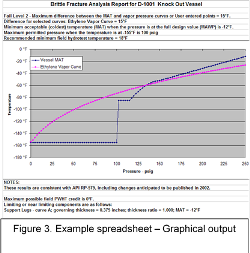 MAT becomes a more complex process. Additionally, establishing the MAT vs. operating pressure for hundreds of vessels as part of a multi-plant process hazard analysis is a major undertaking. Recent experience in the evaluation of more than 1500 vessels in four plants showed the FFS-spreadsheet tool to be an efficient way to establish the MAT, and assess the risk of brittle fracture for a large number of multi-component vessels.
MAT becomes a more complex process. Additionally, establishing the MAT vs. operating pressure for hundreds of vessels as part of a multi-plant process hazard analysis is a major undertaking. Recent experience in the evaluation of more than 1500 vessels in four plants showed the FFS-spreadsheet tool to be an efficient way to establish the MAT, and assess the risk of brittle fracture for a large number of multi-component vessels.
[readon2 url=”index.php?option=com_rsform&view=rsform&formId=4&Itemid=620″]Click to Request Info[/readon2]


